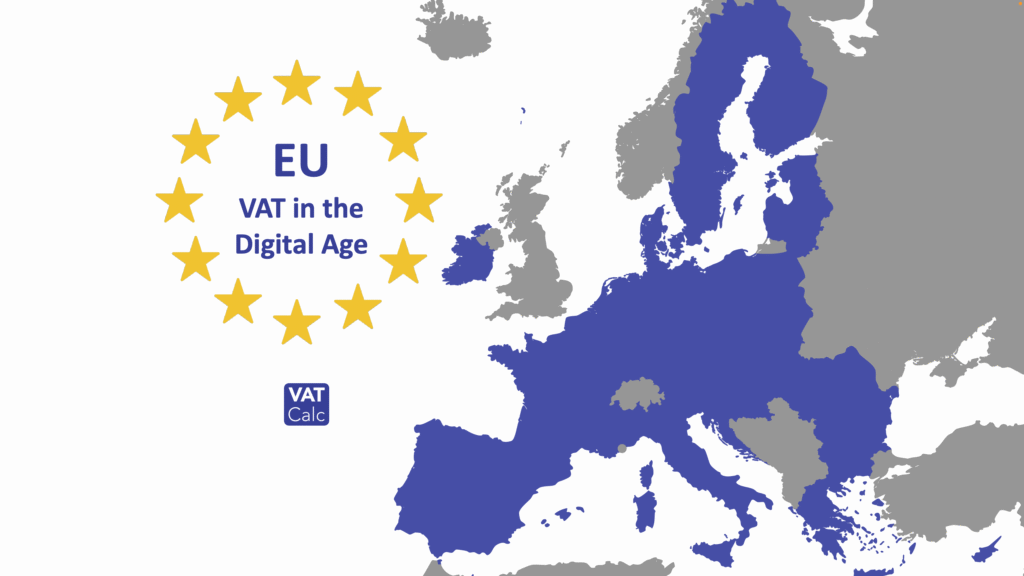VAT in the digital age
This is one of the most important steps in the EU tax reform, affecting not only European companies, but also non-EU companies doing business with the EU.
The ViDA proposal includes mandatory e-reporting and e-invoicing for intra-EU transactions. Intra-EU transactions refer to commercial transactions between different countries of the European Union. The proposal requires amendments to the VAT Directive 2006/112/EC, the implementing Regulation 282/2011 and Regulation 904/2010 on administrative cooperation and combating VAT fraud.
The proposal addresses three separate areas:
- Digital VAT reporting and e-invoicing obligations
- VAT treatment for digital platform models
- Introducing a single VAT registration in all Member States
The following summarises the key issues related to the new digital VAT reporting obligations and e-invoicing.
In the area of e-invoicing, the changes are aimed at making e-invoicing simpler and more consistent:
- E-invoicing becomes the default invoicing method
- The definition of electronic invoice will be aligned with the definition used for public procurement in Directive 2014/55 and will only include structured electronic invoices. Unstructured electronic formats, such as PDF, will also no longer be considered electronic invoices from a tax perspective.
- The requirement for customer consent to receive e-invoices will be removed.
- Invoices will have data elements linked to the invoice payment added
- Collection accounts are abolished
- Member States will no longer need to apply for a derogation if they wish to introduce mandatory B2B e-invoicing.
Digital reporting will be mandatory for all B2B transactions within the EU, with data reported to a central database:
- Digital reporting requirements will be introduced for B2B transactions within the EU, with no thresholds or exemptions. All suppliers and buyers will be required to transmit invoice details to their local tax authority no later than two working days after the invoice is issued. Each Member State’s tax authority will transmit the data to a central database.
- The European Semantic Standard for e-Invoicing EN16931 will be used for the data elements and reporting format, and only a limited set of invoice data will be used for reporting, not the full e-invoice.
- Issuing e-invoices for B2B transactions within the EU will be made mandatory, thus facilitating self-reporting.
- The reporting requirement will replace the current recapitulation reports.
Digital reporting requirements for domestic transactions remain optional for Member States:
- While Member States will have the option to introduce a digital reporting requirement for domestic transactions, it will be up to them to decide whether to do so. This is an area that has already been left to Member States, but the European Commission wants to harmonise and align this area in a way that does not force Member States to introduce it.
- If a Member State introduces digital reporting requirements for domestic transactions, e-invoicing will also be mandatory for this volume of business.
- The local system will need to ensure interoperability with the EU system at data level. Digital reporting of domestic transactions must use the dataset of the European Semantic Standard for e-Invoicing (EN16931). This requirement will apply immediately to newly introduced local IT systems, while existing local IT systems in Member States will have to adapt to these requirements by 2028 at the latest.
- Member States do not have to provide pre-filled VAT returns.
The way data is exchanged will not be regulated at a technical level:
- At this stage, the European Commission has decided not to propose a regulation on the technical modalities of the exchange of data reported to the tax authorities. The choice of how to exchange data is left to the Member States.
- The reason for this decision is that it is a technical issue and the debate would slow down the process of publishing this proposal. However, it is expected that the European Commission will also define this part in the future.
When will the “VAT in the digital age” proposal enter into force?
The proposal must be formally adopted by the Council of the European Union and the European Parliament before it can enter into force. In the case of matters such as taxes, the adoption procedure requires unanimity among all Member States.
A number of Member States are already considering the introduction of continuous transaction monitoring (CTC) and have been waiting for this proposal from the European Commission. It will be interesting to see whether they will wait until the final version of the EU legislation is adopted or whether they will proceed with their implementation on the basis of the provisions in this draft legislation. It is also interesting to note the action taken by Germany, which, just a few days before the initial announcement of the publication of the proposal (16.11.2022), submitted a request for a derogation from the current VAT Directive with regard to the introduction of e-invoicing.
Public consultation on the published proposal is expected to run until 8.2.2023

